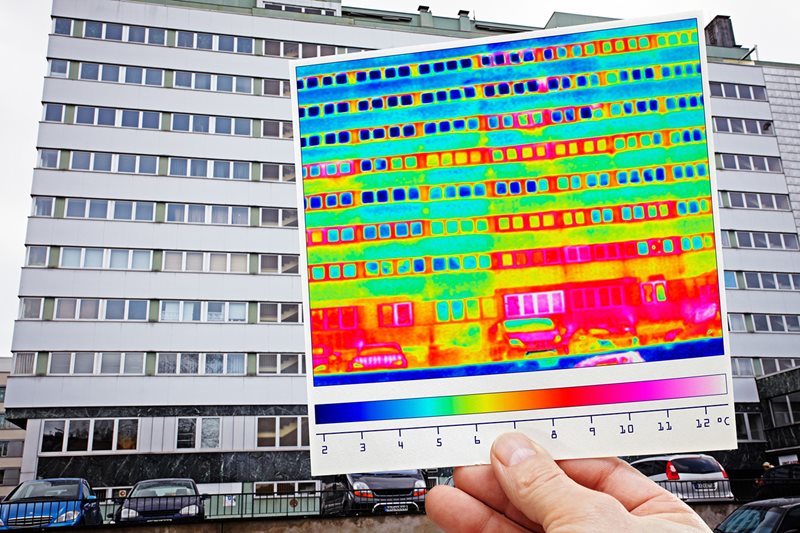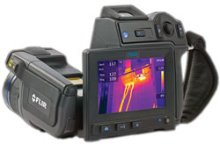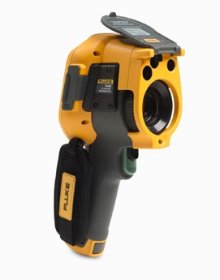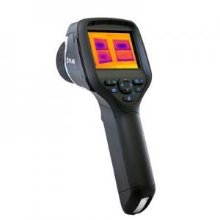Building Envelope Testing

Building envelope testing is the process of testing the physical separator between the interior and exterior of a building to determine if there are any air, water, or thermal leaks within the structure. The building envelope consists of all parts of the outer exterior that keep the building environment dry, heated, or cooled for climate control.
The American Section of the International Association for Testing Materials (ASTM) and the American Architectural Manufacturers Association (AAMA) are other organizations that create and enforce standards that pertain to structural evaluation, building envelope, and waterproofing. Building envelope testing must also comply with standards for the LEED Green Building Rating System, which is a globally recognized symbol of upholding green building efficiency standards.
As a form of non-destructive testing, building envelope tests investigate curtain walls, window systems, and glass and glazing systems without causing structural damage. Testing equipment can also be used for window systems, curtain walls, glass and glazing systems, and other exterior wall systems while keeping the structures intact.
Building Envelope Leaks & Contamination
Many different intrusions can result from an improperly built or maintained building envelope, such as air intrusion, water intrusion, and thermal intrusion. Leaky roofs are a common source of water and water vapor leakage, which can damage walls. Water infiltration is particularly harmful to any building’s structural integrity because it can cause extraordinary damage and remain undetected for a while. Many of these building code problems can be addressed by adhering to the standards established by the NIBS, the ASTM and the AAMA.- Moisture and Water Analysis
- Moisture control is imperative to maintaining a building’s structural integrity, as well as quality health and safety standards. Therefore, waterproofing is necessary to prevent water damage to a building’s foundation. Air barriers must also be in place to prevent unnecessary ventilation and drafts in the building. Any HVAC system installed must be designed specifically for the purpose of air pressure testing.
- Building Forensics
- Building forensics also discover damage to a structure and determine possible causes using scientific processes. These tests investigate the materials, products, compounds, and structures that either fail or do not operate as intended. Failures can cause injury or damage to property, which are often costly and time-consuming.
- Building Envelope Testing
- Building envelope testing plays a crucial role in maintaining environmental health and safety. Universities, corporate campuses, healthcare, hospitals, medicine, and military bases require building envelope testing to uphold health and sanitation quality standards inside structures. On university campuses, multiple buildings must be maintained properly for health and cleanliness. Hospitals also require meticulous standards of cleanliness inside their facilities.
- Temperature Testing
- Chemical, biological, and radiological safety (CBR) is essential in any building because cracks and gaps in the building envelope can affect the overall health and safety of everyone inside the structure. Excessive temperatures, whether hot or cold, can result in problems such as excessive moisture, mold growth, excessive air infiltration, condensation, and water leakage. Inefficient heating and cooling can also result from faults within a building envelope.
NIST Building Envelope Standards
Many building code problems can be solved by the standards established by the National Institute of Building Sciences (NIBS), which is a non-profit organization that creates building standards for safe, affordable structures for housing, commerce, and various industries throughout the United States. These standards apply to all industries that require building envelope testing.The American Section of the International Association for Testing Materials (ASTM) and the American Architectural Manufacturers Association (AAMA) are other organizations that create and enforce standards that pertain to structural evaluation, building envelope, and waterproofing. Building envelope testing must also comply with standards for the LEED Green Building Rating System, which is a globally recognized symbol of upholding green building efficiency standards.
As a form of non-destructive testing, building envelope tests investigate curtain walls, window systems, and glass and glazing systems without causing structural damage. Testing equipment can also be used for window systems, curtain walls, glass and glazing systems, and other exterior wall systems while keeping the structures intact.


